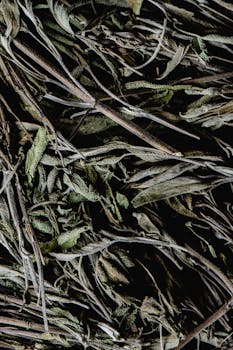Benefits
Digestive Health
Respiratory Health
Cognitive Function
Anti-inflammatory Properties
Antimicrobial Effects
Get creative with dried sage
Adding a pinch of dried sage to a pot of boiling water to infuse homemade pasta or gnocchi dough with an aromatic flavor
Incorporating dried sage into a mixture of sea salt and lemon zest to create a fragrant rub for roasting chicken or turkey
Blending dried sage with butter and honey to spread over warm biscuits or scones for a savory-sweet treat
Mixing dried sage into homemade vegetable chips seasoning for an earthy twist
Stirring dried sage into caramel sauce to drizzle over poached pears or vanilla ice cream for a sophisticated dessert
Incorporating dried sage into a coffee spice rub, adding an unexpected but delightful flavor to grilled steaks or pork chops
Something you can make with dried sage
Origin
Dried sage comes from the herb known as Salvia officinalis, which is native to the Mediterranean region. It has been used for centuries in Mediterranean cuisine and traditional medicine. Sage leaves are harvested from the plant and then dried to preserve their flavor and aroma. The use of dried sage as a culinary herb dates back to ancient times, where it was highly valued for its savory and earthy taste. Today, dried sage is widely used in various cuisines around the world as a seasoning for dishes like soups, stews, stuffing, and roasted meats.
